The legendary T-34. From the Korean War to the Breakup of Yugoslavia
The tank was mass-produced in the USSR from 1940 to 1945 year, starting from 1944, the plants were going to the T-34-85 variant, which received a new turret and more powerful gun - C-85 tank gun. This version of the legendary “Thirty-Four” is especially common today, it can be seen on numerous monuments in many countries of the world. The T-53-34 was mass-produced in the Soviet Union from 85 to 1944 a year, that is, before the mass production of the T-1950 tank began. Under the USSR license, 54 tanks of this type were also produced, they were assembled in Czechoslovakia in 3185-1952, and 1958 tanks were assembled in Poland from 1980 to 1953 a year.
The tank proved to be excellent in the war years. Remaining in service with the Red Army throughout the Second World War. For example, by the end of 1943, the T-34 accounted for up to 79 percent of all tank production in the Soviet Union. By the end of 1944, its share increased to 86 percent of the total production of tanks in the USSR. T-34 took part in almost all military operations of the Great Patriotic War, was widely used by the Soviet troops during the storming of Berlin. After the end of World War II, T-34-85 tanks were in significant quantities delivered to various countries in Europe and Asia, where they were widely used in numerous military conflicts, including the Korean War, the Six-Day War and numerous military conflicts in the former Yugoslavia at the beginning of the 1990's yo
T-34-85 and the Korean War
The first major armed conflict after World War II, in which armored vehicles were widely used, including the Soviet T-34-85 medium tanks, was the Korean war of 1950-1953. Tanks played a key role in the battles during the first 9 months of this conflict. The success of the invasion of North Korean troops into South Korea was largely due to the massive and skillful use of available armored resources, as well as weak anti-tank defense of South Korea.
It is worth noting that the tank forces of North Korea began to form only in the 1948 year, they were created with the active participation of China and the USSR. So in 1948, in Sadong, with the participation of the Soviet troops, the 15 training tank regiment was formed, which was deployed in a suburb of Pyongyang. In the created unit there were only two T-34-85 tanks, while Korean tankers trained the 30 tank officers from the Soviet Union here. In May 1949, the regiment was disbanded, its cadets became officers of the new 105-th tank brigade. This unit Kim Il Sung expected to use for the main attack on South Korea. On the preparation of the brigade for hostilities spared neither the strength nor the means. The 105-I tank brigade consisted of three tank regiments, which subsequently received numbers: 107, 109, and 203. By October 1949, the brigade was fully equipped with medium tanks T-34-85. The 206 th motorized infantry regiment also joined the brigade, the 308 th armored battalion consisting of 6 SAU SU-76M was to support the infantry. The 1950 fighters and officers of this brigade spent the whole spring in intensive exercises.
By the time of the invasion of South Korea, the North Korean People’s Army National Aviation Inspectorate was armed with 258 T-34-85 tanks, of which about half were in the 105 tank tank brigade. About 20 medium tanks were in the 208-th training tank regiment, which was planned to be used as a reserve. The remaining Thirty-Fours were distributed among the newly formed tank regiments - 41, 42, 43, 45 and 46 (in fact, they were tank battalions that sometimes had 15 tanks) and the 16 and 17 units by tank brigades, which were more likely to be equipped with tank regiments (40-45 combat vehicles).
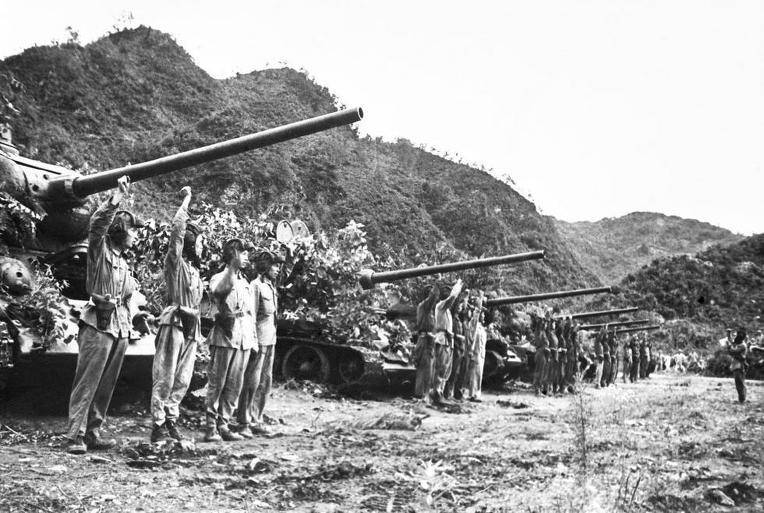
The enemy in the face of the army of South Korea was armed much worse. The South Korean military had very few effective anti-tank weapons, the army was less well equipped and poorly trained. The available anti-tank weapons were mainly represented by inconvenient and ineffective 57-mm caliber anti-tank guns (an American copy of the famous British 6-pound cannon).
The Korean War began in June 1950, when North Korean troops crossed the 38 parallel (the border along which the United States and the Soviet Union agreed to divide Korea), invading the territory of their southern neighbor. Due to the rapid advance of the North Korean troops, the Americans quickly had to transfer part of their troops from Japan to South Korea, in particular one of the companies of the 78 heavy tank battalion, which was equipped with M24 “Chaffee” tanks, which turned out to be almost completely useless against the T-34 -85.
At the initial stage of the war, success was accompanied by the NASK, on whose side there was both initiative and superiority in technology. Most South Korean soldiers have never seen tanks in their lives, and the extremely low efficiency of 60-mm bazookas and 57-mm anti-tank guns only increased the demoralizing effect of the use of North Korean armored vehicles. To fight the tanks, the South Korean military resorted to improvised high-explosive satchel charges and trotyl sticks tied with grenades. Trying to undermine tanks with such charges, a large number of South Korean soldiers were killed, only in the 1 Infantry Division the order of the 90 man was lost. The helplessness of the South Korean infantry in front of the T-34-85 caused panic attack of tanks, which significantly weakened the defenses.
After several months of painful battles, the Americans began to transfer to Korea a large number of modern armored vehicles. The rapid onset of the UN forces from Busan in September 1950 of the year was due primarily to the mechanization of US military units, which was their strength. Heavy fighting with the participation of tanks continued in Korea from August to October 1950. In November, the North Korean tank could hardly be found on the battlefields. By the beginning of the war, the NSCC had an advantage in tanks over the enemy, but by August the numerical superiority was already behind the Americans. If the beginning of the war the DPRK had 258 tanks T-34-85, plus 150 has been received from the Soviet Union after the war began, the Americans by the end of 1950 years received 1326 tanks: 138 M24 «Chafii", 679 medium tanks M4AZE8 "Sherman" 309 M26 Pershing and 200 M46 Patton. At the same time, the “Thirty-fours” could fight on equal terms only with the first two, the M26 and the M46 exceeded them in their technical characteristics.
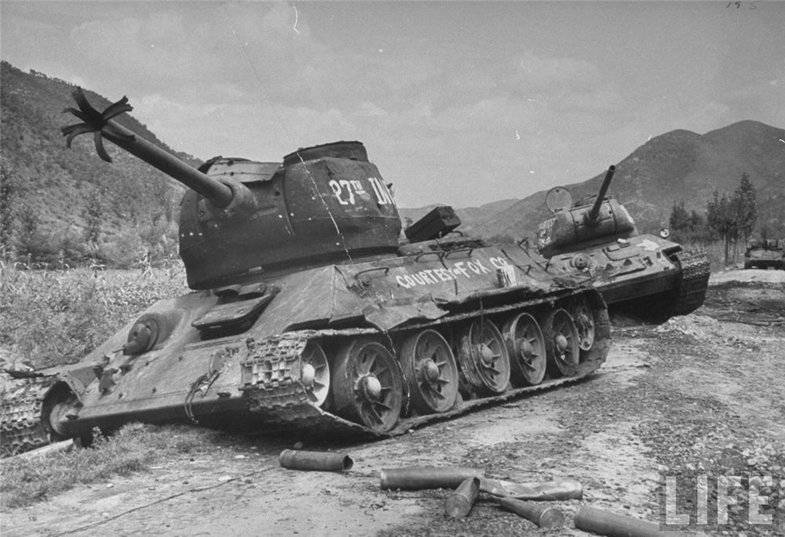
Until the end of the war in Korea, 119 tank battles took place, of which 104 included tanks of the US Army and 15 tanks of the US Marine Corps (1-I tank battalion of marines). Most of these battles had the character of minor skirmishes, only in 24 battles from North Korea more than three tanks participated in the battle. In total, North Korean tankers and self-propelled guns knocked out the 34 of the American tank, of which the 15 combat vehicles were lost forever, the rest were repaired and put into operation. In turn, the American tankers knocked out 97 tanks T-34-85.
Medium tank T-34-85 was more susceptible to the action of tank fire. His armor could penetrate all the guns of American medium tanks, whereas the Thirty-Four was able to penetrate the armor of the M26 and the M46 with difficulty. Tank battles demonstrated lack of training of Korean crews. Acting quite well against the enemy infantry and its light tanks, North Korean tankers were poorly prepared for oncoming tank battles. They shot slowly and inaccurately. For unknown reasons, some Korean crews fired high-explosive shells at enemy tanks and, even achieving hits, did not cause them significant harm. At the same time, the American Pershing 90-mm cannon put the T-34-85 out of operation with a single hit, and the American tank crews were well prepared. Often they fired several shots at the enemy’s tank in order to cause a fire or a detonation of ammunition, which led to the fact that losses among North Korean crews reached 75 percent. At the same time, American tank losses were caused mainly by mine explosions and the effects of anti-tank artillery. So from 136 American percent 1950 lost in battles of the year, 69 was blown up by mines.
In general, the T-34-85 proved to be an excellent tank, but the training of North Korean tank crews was no match for the training of the Americans. In terms of its combat characteristics, the T-34-85 roughly corresponded to the American M4-3-X8 Sherman and excelled Chaffee in everything. Despite the fact that the M4А3Е8 was armed with a smaller caliber gun than the T-34-85, the extensive use of sabot projectiles (Т4 HVAP-T) compensated for the difference in caliber. Thanks to a more powerful cannon, the Soviet medium tank T-34-85 at conventional combat distances would break through the M4AZ8 armor without any difficulties. At the same time, due to the difficult terrain conditions (hilly terrain and mountains), tank battles were often conducted at close distances. The American tanks M26 and M46, which the T-34-85 had to face, were of a newer generation and clearly outnumbered the “Thirty-Four”, corresponding to the rather heavy Soviet tank EC-2M.
T-34-85 in battles in the Middle East
After the end of the Korean war, the T-34-85 tanks were widely used in the Arab-Israeli wars. In particular, this tank was widely used during the 1956 Suez crisis of the year. After Colonel Gamal Abdel Nasser came to power in Egypt, the state changed its foreign policy course, reorganizing into cooperation with the Soviet Union and the socialist countries. In 1953, Nasser signed an agreement on the supply of weapons, including 230 tanks (most of the T-34-85) from Czechoslovakia. They all took part in the Suez War, which lasted from October 1956 to March 1957. Egypt nationalized the Suez Canal, which did not please Britain and France, who did not tolerate such a prejudice of their political and economic interests in the region.
All this resulted in full-scale hostilities. October 31, 1956 English-French aviation attacked Egyptian airfields, and on November 1, Israeli troops launched an offensive on the Sinai Peninsula. During the operation "Cadet", the Israelis destroyed, among other things, 27 T-34-85 tanks, losing 30 of their vehicles. The Israelis fought on the French tanks AMX-13 and the American "Sherman". On November 5, the intervention of the French and British began, but there were no military clashes between the tanks of the European armies and the Egyptian troops.
The Suez crisis pushed Egypt into even closer cooperation with the socialist countries in the military sphere. Until the end of the year, 120 T-34-85 tanks were supplied from Czechoslovakia, and in 1962-63 Egypt received another batch of "Thirty-Fours", only Egypt received the last 1965 T-67-160 tanks, later Cairo more modern T-34 and T-85.
At the beginning of the 1960-ies a significant number of tanks T-34-85 turned out to be in service with the Syrian army. In Syria, the T-34 tanks fought side by side with their recent adversaries — the German PzKpfw.IV tanks and the StuG.III assault guns, the German trophy equipment hit Syria from France. The Soviet T-34-85, together with the former German “fours”, took part in battles with Israeli “Shermans”, this happened in November 1964 of the year on the Golan Heights.
The last war in the Middle East, in which the T-34-85 tanks were used for their intended purpose, was the Six-Day War 1967 of the year. This conflict ended with the defeat of the Arab armies. As a result of the war, Israel gained control of the Gaza Strip, the West Bank, East Jerusalem, the Golan Heights and the Sinai Peninsula. The fighting in Sinai ended with the defeat of the Egyptian troops. In the battles, the Israelis destroyed more than 820 Egyptian tanks, including 251 T-34-85, the Israeli army’s own casualties were 122 of the Sherman tank, AMX-13 and Centurion. On the Syrian front, the loss ratio was in favor of the Arabs, who lost the 73 tank (T-34-85, T-54 and PzKpfw.IV), destroying the Israeli tanks 160.
After this conflict, the T-34-85 was never used again in the Middle East in direct clashes and tank battles, they were replaced by more modern combat vehicles. The Thirty-Fours were no longer used as tanks, the remaining combat vehicles were often used as fixed firing points, a significant number of T-34-85 tanks were turned into chassis for various SPGs.
T-34-85 in conflicts in the Balkans
In 1991, hostilities began in the territory of the former Yugoslavia. In the summer of 1991, the war began in Croatia, during the conflict the parties used tanks, artillery and aircraft. These hostilities then escalated into a full-scale civil war, the cause of which was the coming to power of Slovenia and Croatia by nationalists who had decided to secede from Yugoslavia, as well as the decision of Belgrade to prevent the collapse of the country by force.
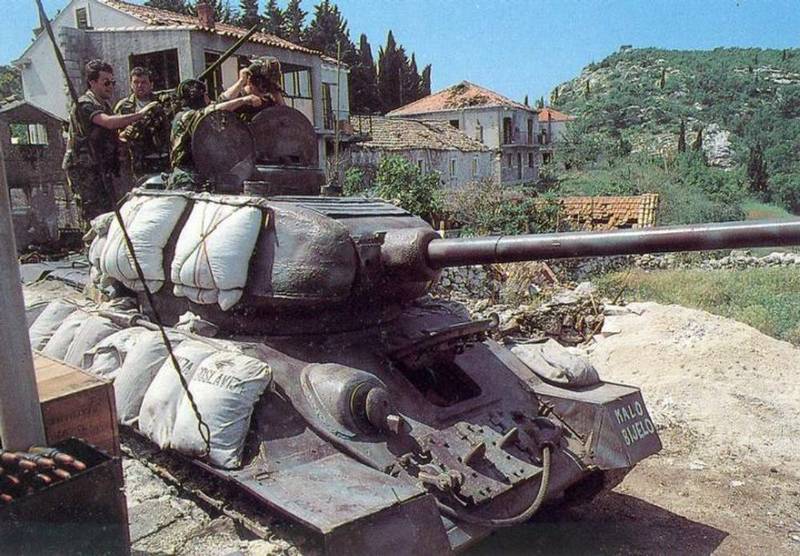
Along with the tanks created after the Second World War (Soviet T-55 and M-84 - the Yugoslav version of the main battle tank T-72), T-34-85 tanks still in combat were involved in the battles. At the same time, the Thirty-Fours used all parties to the conflict in battles. The Croats seized some of these tanks from the Serbs; some of the vehicles were literally hijacked into the formations of the Croatian National Guard by crews who deserted from the Yugoslav People’s Army.
In the autumn of 1991, the T-34-85 was used in the battles in the Dubrovnik and Konavle areas, used by both the Serbs and the Croats. At the same time, due to the low combat readiness of obsolete tanks, they were used as means of fire support, mainly as self-propelled artillery installations, most of their ammunition was high-explosive fragmentation shells. Despite the fact that by that time the tanks were already hopelessly outdated machines, they showed themselves well in combat operations. For example, a Croatian tank with the inscription “MALO BIJELO” experienced two hits of the Malyutka anti-tank guided missile, and its crew destroyed a truck, two armored vehicles and one T-55 Serbs. The Croats tried to compensate for the weakness of the T-34-85 armor by placing sandbags on the sides of the turret and the hull of the tank.
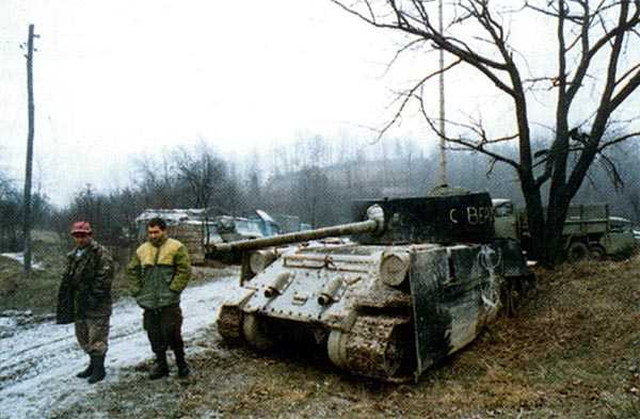
Used T-34-85 and during the fighting in the territory of Bosnia and Herzegovina. Their use was sporadic. This period includes a photograph of an unusual screened Serbian tank T-34-85 with the inscription "With Vera!" On the tower, he went through the entire Bosnian war. After the end of hostilities, all the remaining Thirty-Fours as part of the armies that had arisen on the site of the former Yugoslavia of the states were, after a short time, removed from service.
Information sources:
http://otvaga2004.ru/tanki/v-boyah/tanki-t-34-v-koree
http://otvaga2004.ru/tanki/v-boyah/t-34-after-war
http://www.aviarmor.net/tww2/tanks/ussr/t-34-85_5.htm
https://www.gazeta.ru/army/2018/03/30/11701598.shtml?updated
Open source materials
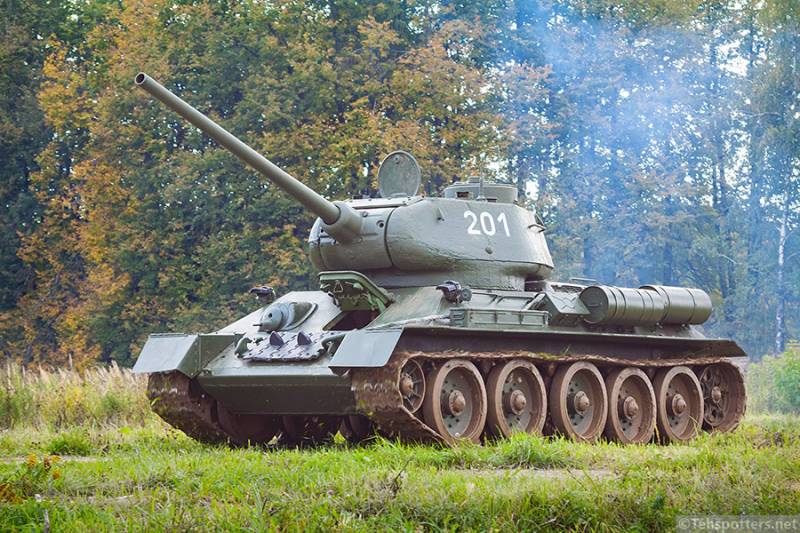
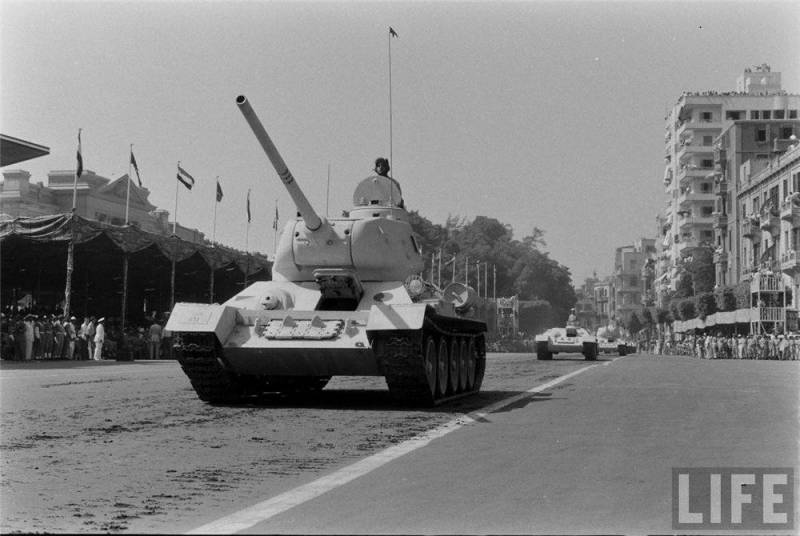
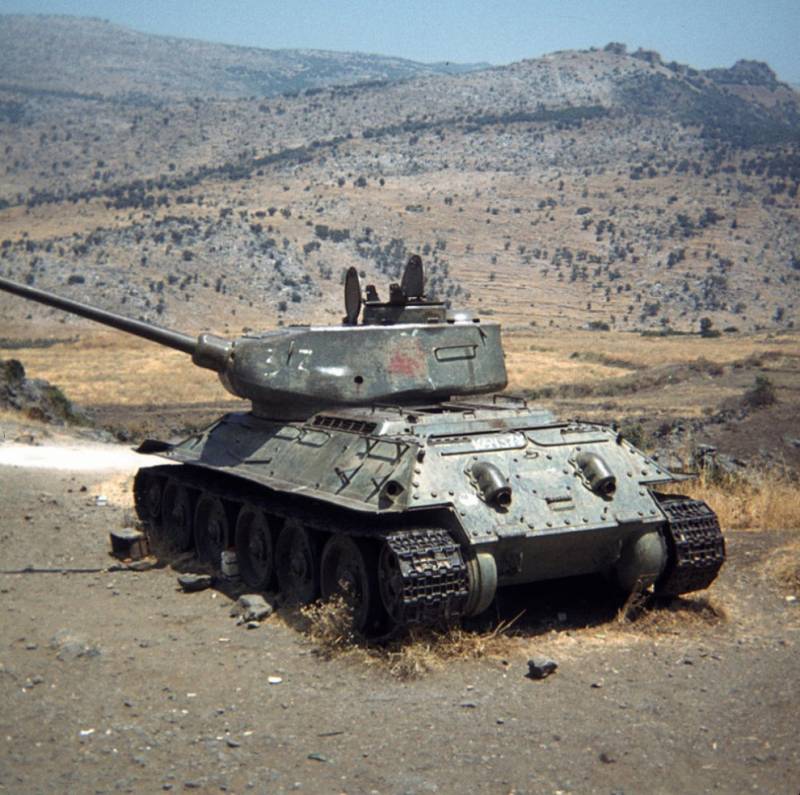
Information